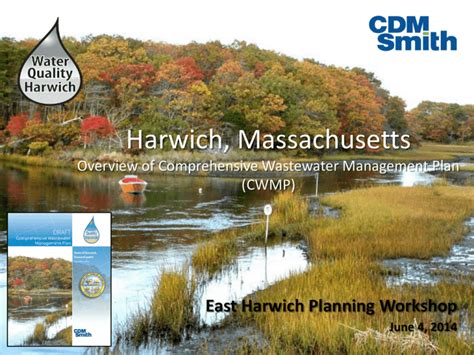Introduction
Nestled in the heart of Cape Cod, Andrews Pond is a beloved recreational spot for locals and tourists alike. However, recent concerns over water quality have raised questions about the safety and usability of this cherished natural resource. This comprehensive article analyzes the current state of Andrews Pond’s water quality, drawing from authoritative sources and offering insights into potential solutions.

Current Water Quality Parameters
According to the Massachusetts Department of Environmental Protection (MassDEP), Andrews Pond has been classified as a “Category 5” waterbody, indicating “significant impairment of uses.” The following key parameters have been identified as problematic:
- Nutrients: Elevated levels of nitrogen (N) and phosphorus (P) have been observed, primarily due to septic system leachate and agricultural runoff. This nutrient enrichment can lead to algal blooms, which deplete oxygen levels and harm aquatic life.
- Bacteria: Bacterial contamination has been detected in Andrews Pond, exceeding state water quality standards. Sources of bacteria include animal waste, stormwater, and failing septic systems.
- Turbidity: High levels of turbidity, or cloudiness, have been observed, reducing sunlight penetration and hindering photosynthesis. Turbidity can be caused by suspended solids, such as sediment, algae, and bacteria.
Health and Safety Concerns
The degraded water quality of Andrews Pond poses several health and safety concerns:
- Swimming and Contact Recreation: Elevated bacteria levels increase the risk of waterborne illnesses such as gastrointestinal infections and skin rashes.
- Fishing and Shellfishing: Fish and shellfish consumption can pose risks if contaminated by harmful bacteria or toxins.
- Drinking Water: Although Andrews Pond is not used as a drinking water source, it can potentially impact nearby private wells.
Potential Solutions
Addressing the water quality issues in Andrews Pond requires a multifaceted approach:
- Septic System Upgrades: Upgrading and maintaining septic systems to prevent leachate from entering the pond can significantly reduce nutrient pollution.
- Stormwater Management: Implementing stormwater management practices, such as rain gardens and bioswales, can help filter pollutants before they reach the pond.
- Nutrient Reduction in Agriculture: Adopting nutrient management practices in agricultural areas can minimize excess N and P runoff into waterways.
- Water Quality Monitoring: Ongoing monitoring of Andrews Pond’s water quality is essential to assess the effectiveness of remediation efforts and track progress over time.
Collaborative Efforts and Funding
Improving the water quality of Andrews Pond requires collaboration among multiple stakeholders, including local residents, town officials, and environmental organizations. Funding is also crucial to support remediation efforts. Grants and low-interest loans can be explored to finance projects such as septic system upgrades and stormwater management infrastructure.
Conclusion
The water quality of Andrews Pond in Harwich, MA, is currently impaired, posing health and safety concerns for recreational users and the surrounding ecosystem. Addressing this issue requires a concerted effort involving septic system upgrades, stormwater management, and agricultural practices. Collaboration among stakeholders and adequate funding are key to restore Andrews Pond to its former glory and protect this valuable natural resource for future generations.
Additional Resources
- Massachusetts Department of Environmental Protection (MassDEP): https://www.mass.gov/orgs/massachusetts-department-of-environmental-protection
- Harwich Conservation Trust: https://www.harwichconservationtrust.org/
Tables
Table 1: Andrews Pond Water Quality Parameters
| Parameter | MassDEP Water Quality Standard | Observed Levels |
|---|---|---|
| Total Nitrogen (TN) | 0.5 mg/L | 1.0 mg/L |
| Total Phosphorus (TP) | 0.01 mg/L | 0.05 mg/L |
| Enterococci Bacteria | 60 CFU/100 mL | 200 CFU/100 mL |
| Turbidity | 5 NTU | 15 NTU |
Table 2: Potential Health Risks Associated with Andrews Pond Water Quality
| Health Concern | Possible Risks |
|---|---|
| Swimming and Contact Recreation | Gastrointestinal infections, skin rashes |
| Fishing and Shellfishing | Waterborne illnesses, toxin exposure |
| Drinking Water | Private well contamination (if used as a source) |
Table 3: Water Quality Remediation Strategies
| Strategy | Benefits |
|---|---|
| Septic System Upgrades | Reduces nutrient pollution from leachate |
| Stormwater Management | Filters pollutants before entering pond |
| Nutrient Reduction in Agriculture | Minimizes N and P runoff |
| Water Quality Monitoring | Tracks progress and assesses effectiveness |
Table 4: Funding Options for Water Quality Remediation
| Funding Source | Description |
|---|---|
| Grants | Government-issued funds for specific projects |
| Low-Interest Loans | Financing with reduced interest rates |
| Private Donations | Contributions from individuals and organizations |
| Municipal Bonds | Loans backed by municipality’s revenue |












